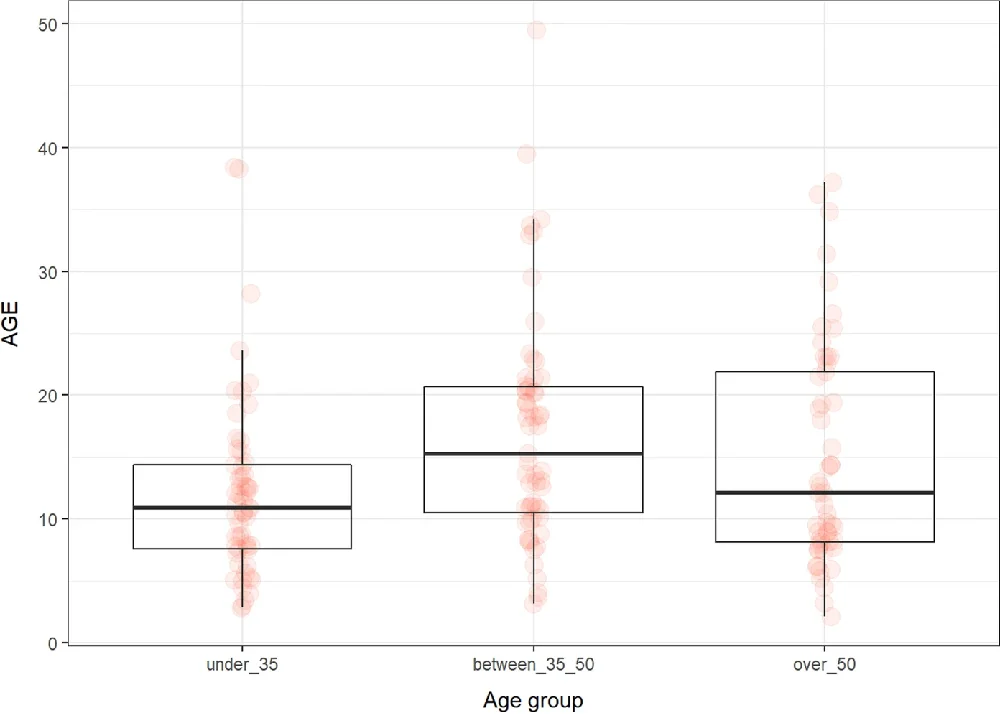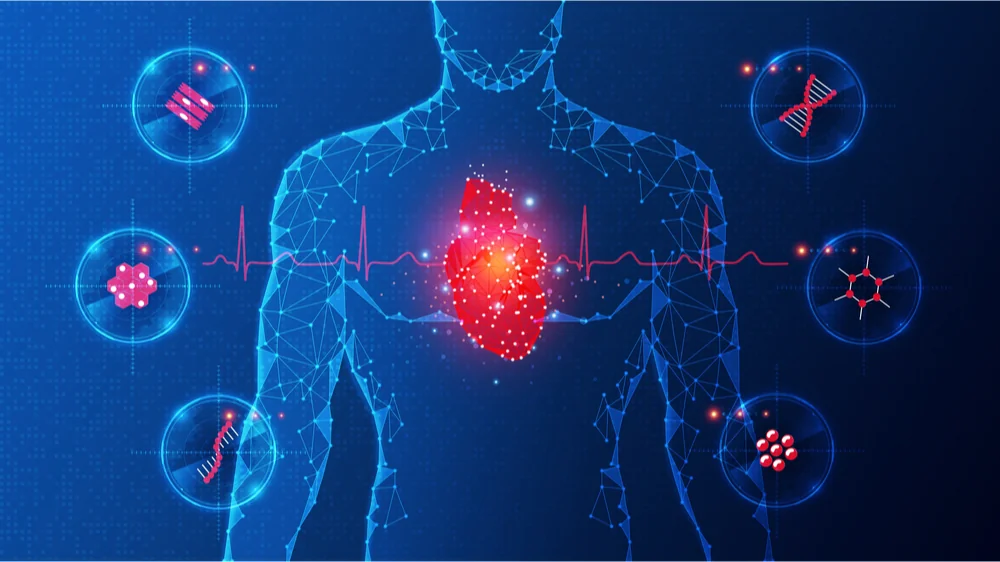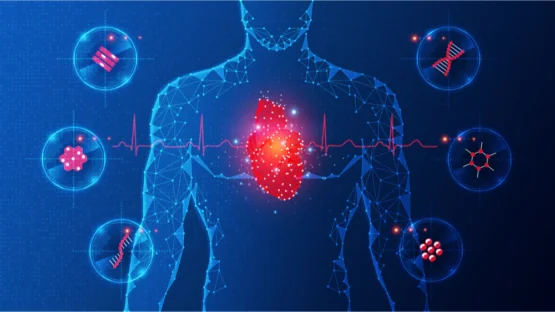Researchers publishing in Biogerontology have tested multiple biomarkers in an effort to use them as proxies for aging, and some of their findings were surprising.
A simple study with direct measurements
Unlike other association studies that are used to evaluate biomarkers of aging, this study did not use data from a pre-existing biobank or related database. Instead, the authors recruited a total of 169 people, divided evenly between the sexes, and grouped them into under-35s, ages 35 to 50, and over-50s. There was an extensive list of exclusion criteria, including pregnancy, recent viral infection, recent surgery, and age-related morbidities such as stroke and heart attack.
Many positive results
Growth differentiation factor 15 (GDF15), which can be used to measure stress and mitochondrial dysfunction, was very significantly associated with age. Interestingly, though, the highest levels were found in the 35-50 group, with the over-50 group dropping slightly but not to the level of the under-35 group.
While the related molecule GDF11 is associated with regeneration, it increases with age, according to this study. The researchers note prior work showing that people whose GDF11 levels decrease with age are more likely to present with age-related diseases [1].
Measurements of the inflammatory biomarker NLRP3 also had positive results: people under 35 had significantly less NLRP3 than people over 50. The researchers note that using NLRP3 as a biomarker is difficult because most of the recorded values were very small.
Advanced glycation end-products (AGEs) had a significant, although nonlinear, association. The under-35 group had significantly fewer AGEs than the 35-50 group. Strangely, AGEs were reported to go back down with further aging, as the over-50 group had fewer AGEs than the 35-50s. Men also had significantly more AGEs than women.

Surprising negative findings
This study’s negative findings may be of greater scientific interest than its positive ones.
These researchers report that telomerase itself is not a good biomarker of aging, because while telomerase activity decreases with aging [2] and older people have shorter telomeres than younger people, telomerase itself did not have statistically significant differences between the age groups studied. While counterintuitive and perhaps controversial, this finding has similarities with previous research, which found that people in their 30s have telomerase levels that decrease with age but very old people have increasing levels with age [3]. High telomerase in young people is also associated with cancer [4].
DNA and RNA oxidative damage was also not reported to be statistically different between the groups. NAD+ was, interestingly, also not found to be statistically different, which corroborates some research [5] but contradicts many other studies [6].
Klotho, another well-known compound that is associated with aging, was also not found to have significant differences between each group, although klotho was noted to decline with age within the groups. However, the measurements for both NAD+ and klotho were wildly different within each group, with some people’s values being very small while others’ were hundreds or thousands of times greater. This individual variance, itself, implies that these may be poor biomarkers in practice.
Ascertaining validity
As much of this eyebrow-raising data seems to fly in the face of generally accepted knowledge about biomarkers of aging, further investigation seems necessary, particularly given this study’s relatively small sample size, its extensive exclusion criteria, and the wide age range of the oldest group. Epigenetics and gene expression were also not tested.
Scientific teams do not always agree with one another, and this disagreement can be the result of multiple causes. Other research groups are encouraged to corroborate, explain, contradict, or outright refute this data.
Literature
[1] Schafer, M. J., Atkinson, E. J., Vanderboom, P. M., Kotajarvi, B., White, T. A., Moore, M. M., … & LeBrasseur, N. K. (2016). Quantification of GDF11 and myostatin in human aging and cardiovascular disease. Cell metabolism, 23(6), 1207-1215.
[2] Vaiserman, A., & Krasnienkov, D. (2021). Telomere length as a marker of biological age: state-of-the-art, open issues, and future perspectives. Frontiers in Genetics, 11, 630186.
[3] Hertzog, R., Popescu, D., & Călborean, O. (2021). Telomerase level: a useful tool to predict longevity. J Aging Sci 9(3):1–4.
[4] Noureen, N., Wu, S., Lv, Y., Yang, J., Alfred Yung, W. K., Gelfond, J., … & Zheng, S. (2021). Integrated analysis of telomerase enzymatic activity unravels an association with cancer stemness and proliferation. Nature communications, 12(1), 139.
[5] Schwarzmann, L., Pliquett, R. U., Simm, A., & Bartling, B. (2021). Sex-related differences in human plasma NAD+/NADH levels depend on age. Bioscience Reports, 41(1), BSR20200340.
[6] Karas, A., Holmannova, D., Borsky, P., Fiala, Z., Andrys, C., Hamakova, K., … & Borska, L. (2022). Significantly Altered Serum Levels of NAD, AGE, RAGE, CRP, and Elastin as Potential Biomarkers of Psoriasis and Aging—A Case-Control Study. Biomedicines, 10(5), 1133.



